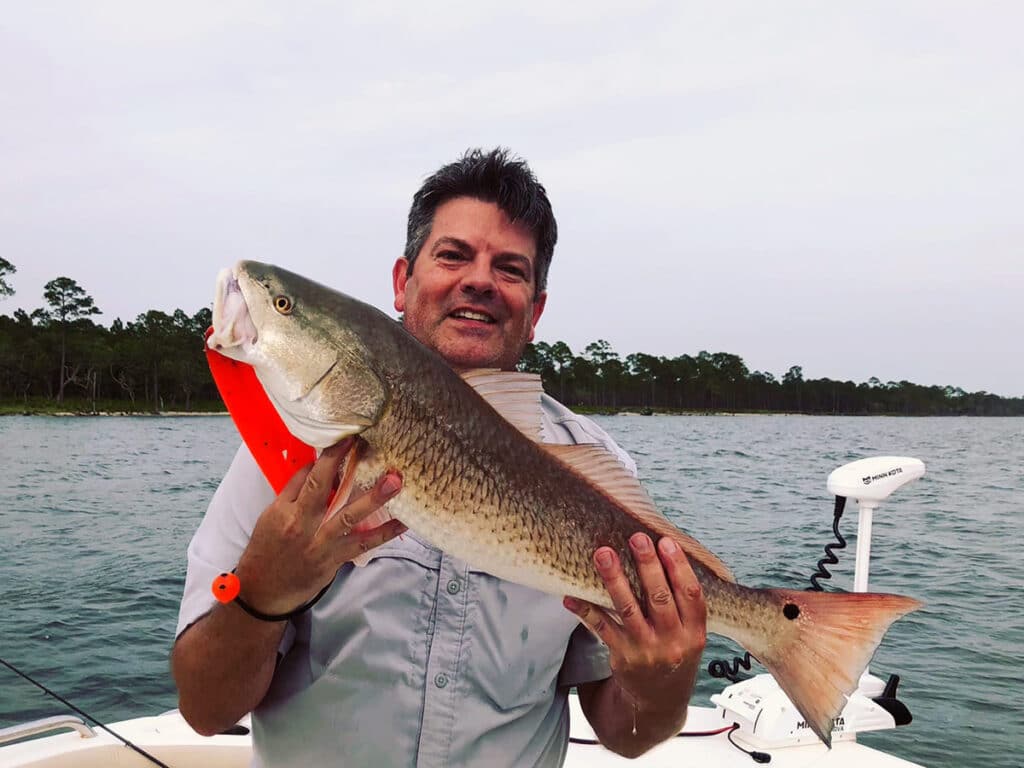
Disaster struck the Gulf of Mexico on April 20, 2010, with enormous consequences. As a result of errors caused by shortcuts, miscalculations and questionable procedures, the Deepwater Horizon oil rig, located 41 miles off the Louisiana coast, exploded, tragically taking 11 lives. The rig sank the next day still gushing oil after the emergency capping device was not activated. For nearly five months the well spewed an estimated 60,000 barrels of crude oil per day into the Gulf before it was finally sealed on September 19, 2010.
A government scientific panel later estimated 4,900,000 barrels of oil were vented during the prolonged spill, creating a slick of 57,500 square miles that impacted 1,100 miles of shoreline in Louisiana, Mississippi, Alabama and Florida. Subsequent trials and court settlements from the well’s owners and operators resulted in billions of dollars in fines to mitigate the environmental damage. Now, more than a decade later, a project funded with that money has finally come to fruition.
Oil Spill Funds Pay to Restore Fish Habitat
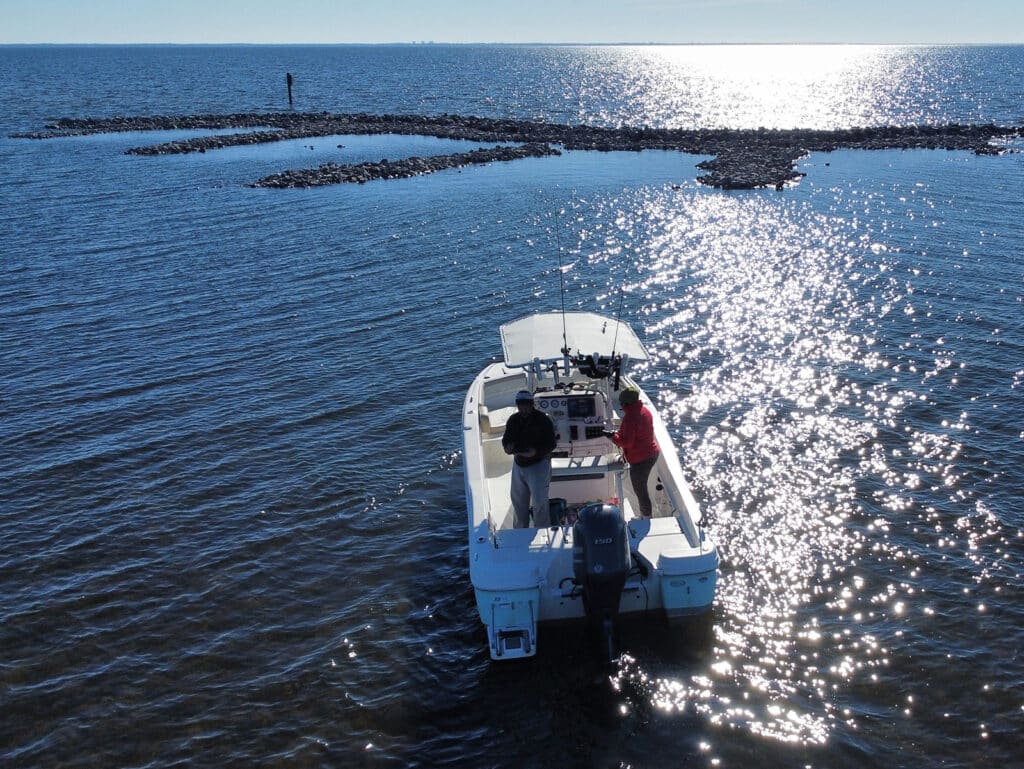
With a grant from the National Fish and Wildlife Foundation’s Gulf Environmental Benefit Fund, The Nature Conservancy (TNC), acting as manager, initiated the project in 2016. WSP was contracted to do pre- and post-construction monitoring of the sites. Jacobs was brought on as the engineering firm for the design, permitting and construction oversight, while CrowderGulf was the actual construction contractor. Anne Birch, TNC’s Florida Oceans and Coasts Survey Director, was the point person.
“The goal of this project was to help restore healthy, functioning oyster habitat in East and Blackwater Bays in the Florida Panhandle,” Birch explains. “Critical oyster habitat has been significantly reduced from its former range not only across the world but in the Gulf’s bays and estuaries. The bays of Santa Rosa County once teemed with oysters and historic maps bear that out. But decades of water quality degradation, among other challenges, led to a sharp decline in oysters and the important seagrasses that once flourished.”
The permitted sites were just offshore of the Escribano Point Wildlife Management Area, a tract managed by the Florida Fish and Wildlife Conservation Commission (FWC) that backs up to the Eglin Air Force Base. The reefs are 200 to 700 feet from the shore on mud and sand. Breaks between the combined 33 marked reefs allow navigation. The minimum depth is about three feet and the tops of the reefs are visible during low tides for most of the year. David Stejskal, vice president of the Jacobs engineering firm, was involved in the design and planning from the start.
How the Oyster Reefs Were Built
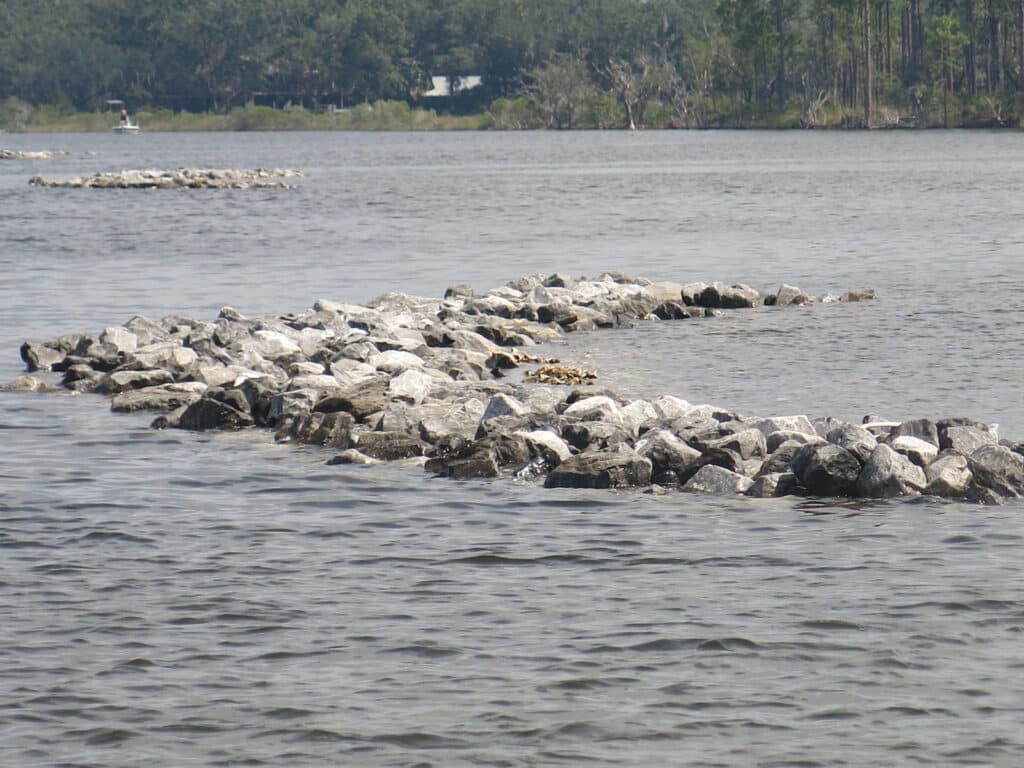
“Water depth, hydrographic characteristics such as tides, currents and wave conditions, sea level rise, littoral sediment drift and oyster behavior and preferred environmental conditions were all considered,” Steiskal says. The reef material is limestone rocks sourced from Kentucky ranging from 140 to 495 pounds for the outer boundaries, with oyster shells along the back-reef portions facing the shoreline. The shells were collected from oyster houses in Bayou La Batre and other areas in Alabama. Four different reef designs were deployed, ranging from 126 to 333 feet long, 72 to 142 feet wide and approximately four feet high.
Tug boats and large barges were used to ship the limestone rock from Kentucky down river to Pensacola. Operators on site used smaller boats to push and tug additional barges with cranes and the limestone for placement. Construction was completed totally within the water to avoid impacting the adjacent wildlife management area.
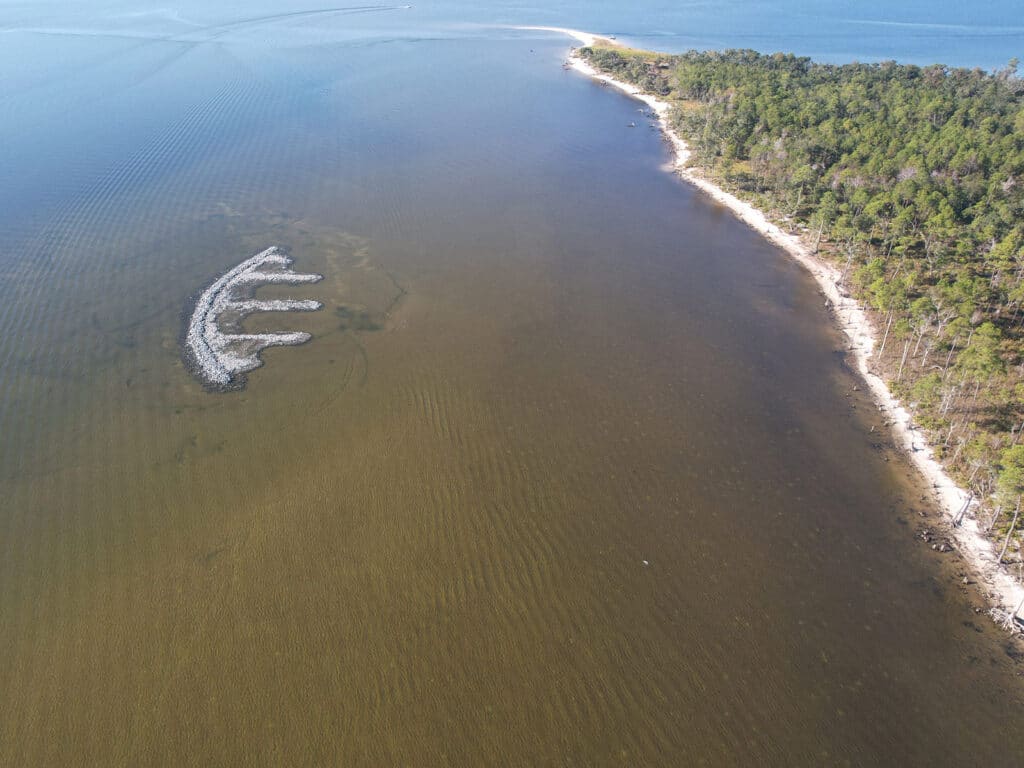
“Most of the Gulf of Mexico has diurnal tides which means only one high and one low tide each day while most of the Earth’s coastal zones have two highs and two lows daily. Because of that and the reef’s shallow depths, the contractor had to work around the one high tide availability, day or night. Low tides delayed construction since the barges couldn’t access the project site. Alternatively, higher than usual high tides sometimes reduced visibility due to both the reef being completely submerged and because the water is naturally dark due to tannins brought in from the upstream Blackwater River. Those impacts created some delays.”
Matt Deavenport managed the design project out of Jacobs’ Pensacola, Florida office. He led the planning, modeling and design coordination and is the Engineer on Record. Heather Hyde was the construction manager on-site. Additional design input came from Dr. Luce Bassetti and Olwen Rowlands.
The overall cost of the East Bay Oyster Habitat Restoration Project was $13.1 million. Design, permitting and advance monitoring was just under $1.3 million, while the reef construction and post monitoring program bill was $11.8 million. WSP, a scientific company, will monitor the sites for the next five years to evaluate oyster recruitment and any increases in fish, crabs and water birds.
Why Gulf Oysters Are So Important
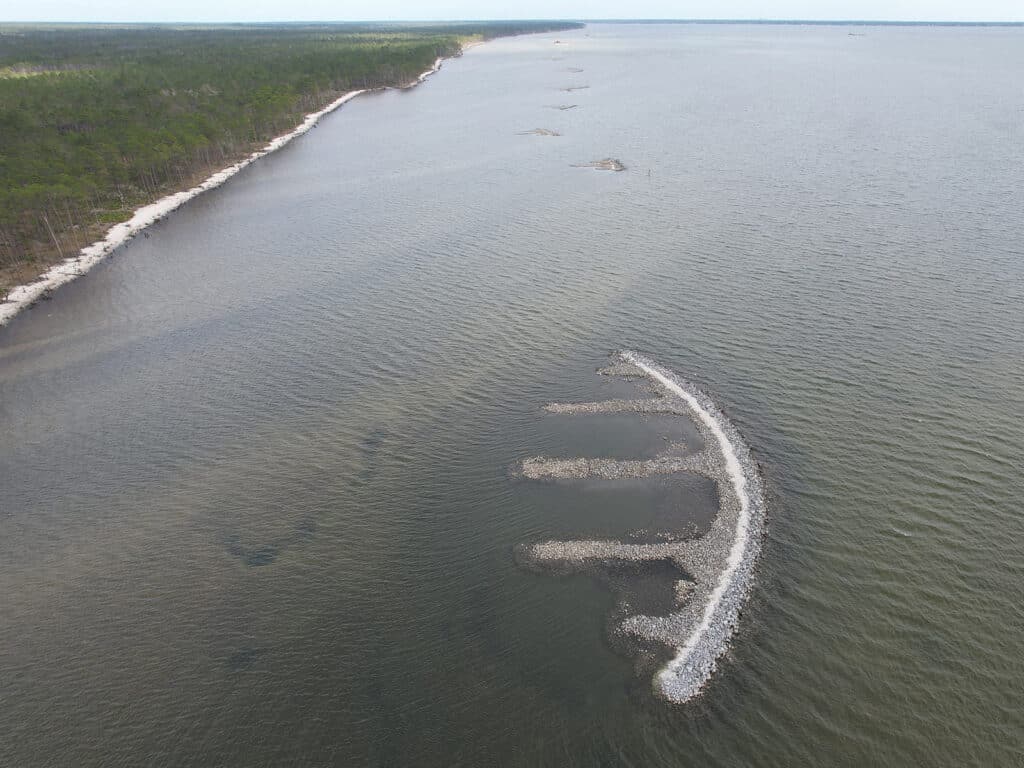
“The Gulf of Mexico connects, sustains and supports our communities,” Steiskal says. “Oysters are considered a core species, the building block of a healthy marine ecosystem, and the Gulf Coast has seen a rapid decline in oyster populations over the last few decades. Every person involved in this project understands and appreciates the importance of preserving, restoring and protecting the vibrancy of the Gulf. We are anglers, eco-tourists, or simply love a good seafood dinner, and none of those things are possible without projects like this.”
Birch expects to see positive results soon.
“We hope to see spat settlement within the next year,” she says. “Since the site previously was sandy bottom, providing a structure should provide habitat for and substantially increase invertebrates and fish. I’ve personally caught a good size red drum and spotted seatrout off one of the reefs in July.”
Others believe that timeline may be accelerated. Jonathan Browne is a local shallow-water enthusiast who targets the bay in his 18 Hewes Redfisher flats boat.
“I’m already catching more redfish in East Bay around the reefs,” Browne explains. “We really need more of these types of projects to improve the fishery and habitat. I just hope they will hold up during hurricanes.”
Sam Ravenal is another local angler who fishes East and Blackwater Bays regularly in his Nauticstar 231 hybrid bay.
“My family and I have been fishing the shorelines and the reefs since they started construction,” he said. “There are growing numbers of mullet and other minnows around the reefs, using them as cover. We’re catching some nice reds and I’ve seen some good-sized sharks cruising around, too. This is a really good thing for the bays. It livens up the shoreline and will make that area much more productive. The first reefs built are already showing more signs of life.”
Mother Nature is very resilient, given the chance. But sometimes a little nudge doesn’t hurt, especially when it comes after a man-made disaster.
Healthy Oysters Help Clean Water
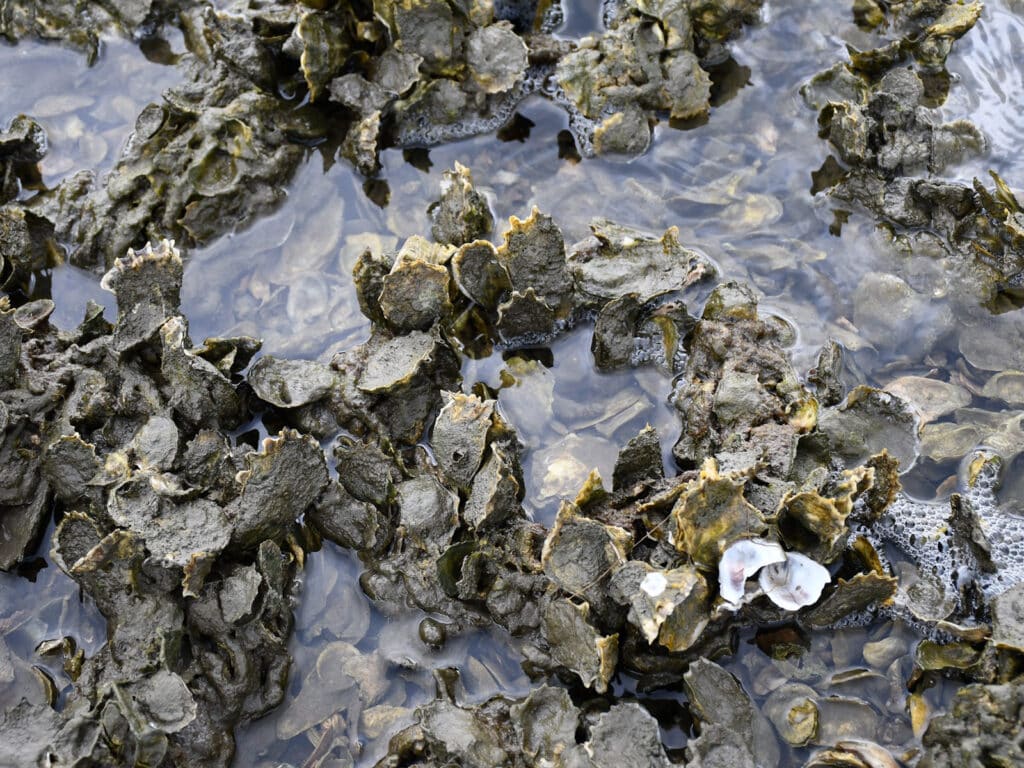
Healthy adult oysters can filter up to 50 gallons of water daily. Multiplied by hundreds of living oysters forming a reef and the water filtration is significant. Clean water in estuaries support aquatic grasses and other plants that need light to survive. These plants, in turn, yield benefits like fish production and carbon storage, completing an invaluable cycle.
Healthy oyster reefs also serve as buffers against rising sea tides and storms by forming natural breakwaters that help protect shorelines from erosion. Reefs have an economic benefit to harvesters and create “fish-making” habitat for species such as crabs and shrimp.
“When we help to restore and conserve oyster habitat and support the oyster fishery, we’re also helping our estuaries and our coastal communities thrive,” says TNC’s Anne Birch. “I can think of few other species that combine the ecological, economic and cultural benefits than the oyster.”









